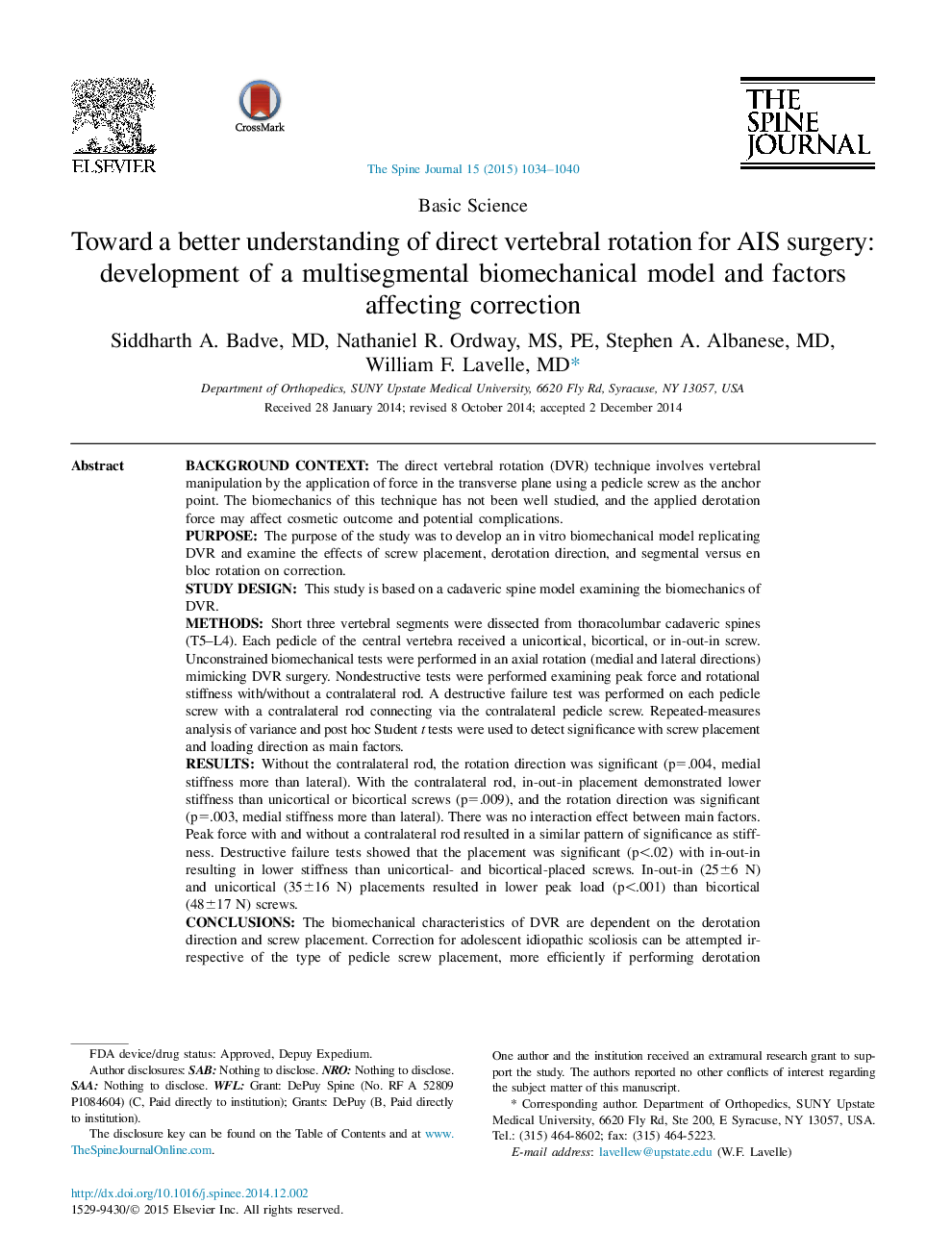| کد مقاله | کد نشریه | سال انتشار | مقاله انگلیسی | نسخه تمام متن |
|---|---|---|---|---|
| 6212045 | 1268563 | 2015 | 7 صفحه PDF | دانلود رایگان |

Background contextThe direct vertebral rotation (DVR) technique involves vertebral manipulation by the application of force in the transverse plane using a pedicle screw as the anchor point. The biomechanics of this technique has not been well studied, and the applied derotation force may affect cosmetic outcome and potential complications.PurposeThe purpose of the study was to develop an in vitro biomechanical model replicating DVR and examine the effects of screw placement, derotation direction, and segmental versus en bloc rotation on correction.Study designThis study is based on a cadaveric spine model examining the biomechanics of DVR.MethodsShort three vertebral segments were dissected from thoracolumbar cadaveric spines (T5-L4). Each pedicle of the central vertebra received a unicortical, bicortical, or in-out-in screw. Unconstrained biomechanical tests were performed in an axial rotation (medial and lateral directions) mimicking DVR surgery. Nondestructive tests were performed examining peak force and rotational stiffness with/without a contralateral rod. A destructive failure test was performed on each pedicle screw with a contralateral rod connecting via the contralateral pedicle screw. Repeated-measures analysis of variance and post hoc Student t tests were used to detect significance with screw placement and loading direction as main factors.ResultsWithout the contralateral rod, the rotation direction was significant (p=.004, medial stiffness more than lateral). With the contralateral rod, in-out-in placement demonstrated lower stiffness than unicortical or bicortical screws (p=.009), and the rotation direction was significant (p=.003, medial stiffness more than lateral). There was no interaction effect between main factors. Peak force with and without a contralateral rod resulted in a similar pattern of significance as stiffness. Destructive failure tests showed that the placement was significant (p<.02) with in-out-in resulting in lower stiffness than unicortical- and bicortical-placed screws. In-out-in (25±6 N) and unicortical (35±16 N) placements resulted in lower peak load (p<.001) than bicortical (48±17 N) screws.ConclusionsThe biomechanical characteristics of DVR are dependent on the derotation direction and screw placement. Correction for adolescent idiopathic scoliosis can be attempted irrespective of the type of pedicle screw placement, more efficiently if performing derotation maneuvers en bloc on bicortical screws in the medial direction.
Journal: The Spine Journal - Volume 15, Issue 5, 1 May 2015, Pages 1034-1040